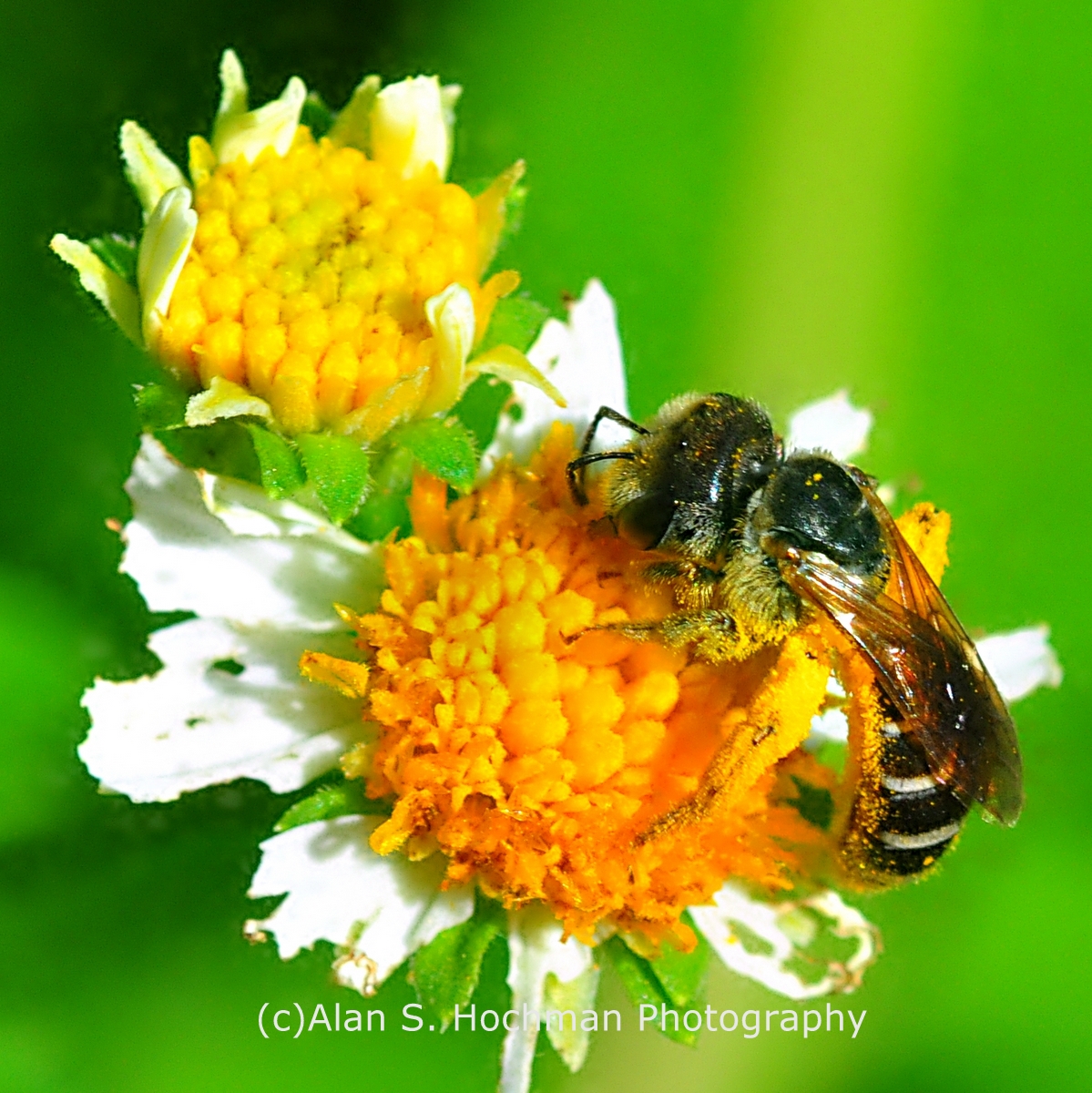WILDLIFE PHOTOGRAPHY – OLETA RIVER STATE PARK, FL
This photograph of a Honeybee collecting pollen was taken at Oleta River State Park in Florida. The Oleta River State Park, located along Biscayne Bay on 163rd Street, is a fabulous place to enjoy an outdoor vacation. There is plenty to do in the 1,043-acre park including mountain biking, swimming, hiking, kayaking and fishing. Food and equipment for activities are available at the park concession. For those interested in doing some insect photography at Oleta River State Park, just walk along any of the biking trails. You won’t be disappointed! The gear used in this photo of a Honeybee was a Nikon D90 camera body attached to a Tamron 2x teleconverter and Nikkor 60mm 2.8 lens. A macro light ring was also used in this photograph.
Pollination by insects is called entomophily. Entomophily is a form of pollination whereby pollen is distributed by insects, particularly bees, Lepidoptera (e.g. butterflies and moths), flies and beetles. Note that honey bees will pollinate many plant species that are not native to areas where honey bees occur, and are often inefficient pollinators of such plants.
Honey bees are good pollinators for many reasons. Their hairy bodies trap pollen and carry it between flowers. The bees require large quantities of nectar and pollen to rear their young, and they visit flowers regularly in large numbers to obtain these foods. In doing so, they concentrate on one species of plant at a time and serve as good pollinators for this reason. Their body size enables them to pollinate flowers of many different shapes and sizes. The pollination potential of the bees is increased because they can be managed to develop high populations. The number of colonies can also be increased as needed and the colonies can be moved to the most desirable location for pollination purposes.
Honey bees are most active at temperatures between 60 degrees F. (16 degrees C.) and 105 degrees F. (41 degrees C.). Winds above 15 miles per hour reduce their activity and stop it completely at about 25 miles per hour. When conditions for flight are not ideal, honey bees work close to their colonies. Although they may fly as far as 5 miles in search of food, they usually go no
farther than 1 to 1-1/2 miles in good weather. In unfavorable weather, bees may visit only those plants nearest the hive. They also tend to work closer to the hive in areas where there are large numbers of attractive plants in bloom.

More more more! 🙂
More more more! 🙂
Love this photo but it’s definitely not a honey bee. I can’t tell you what it is (perhaps a type of sweat bee?) I just know it’s not a honey bee.
Nice site; good photos.
Hi Rusty, I’ll have to check out a sweat bee. Now it looks more wasp like?
Awesome, Beautiful!!! no words